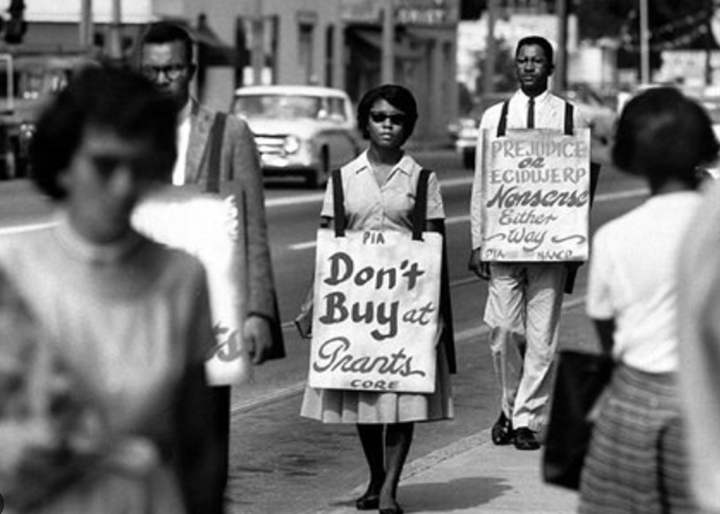
Combating the trafficking of persons or human trafficking requires a multifaceted approach. This involves advocacy, legislation, survivor support, community engagement, international cooperation, and technological innovation. It helps to dismantle trafficking networks, protect victims, prosecute perpetrators, and eradicate this egregious violation of human rights. Human trafficking, a harrowing reality that plagues communities worldwide, remains a grave violation of human rights and dignity. In the fight against this abhorrent crime, activism emerges as a potent force driving awareness, advocacy, and tangible change. As we delve deeper into the multifaceted role of activism in combating the trafficking of persons, we uncover a tapestry of efforts aimed at prevention, protection, and prosecution.
Raising Awareness
At the forefront of the anti-trafficking movement, activists spearhead initiatives to raise public consciousness about the scourge of human trafficking. Through educational campaigns, awareness events, and community outreach programs, activists strive to dismantle misconceptions. They also dispel myths and highlight the stark realities faced by trafficking victims. By amplifying survivor narratives and sharing compelling stories, activists ignite empathy, galvanize support, and mobilize collective action against trafficking networks.
Advocating for Policy Reforms
In the halls of legislative bodies activists wield their influence to advocate for robust policy reforms to combat human trafficking effectively. By lobbying lawmakers, drafting legislation, and engaging in policy discussions, activists push for the enactment of laws that bolster victim protections, strengthen law enforcement efforts, and hold perpetrators accountable. Through relentless advocacy, activists strive to bridge gaps in existing legal frameworks and ensure that anti-trafficking measures are comprehensive, victim-centred, and responsive to evolving challenges.
Supporting Survivors
Central to the mission of anti-trafficking activism is the unwavering commitment to supporting survivors on their journey to recovery and empowerment. Activist-led organizations and grassroots initiatives provide a lifeline of support services. These include shelter, counselling, legal aid, and vocational training. The services help survivors rebuild their lives with dignity and resilience. By offering holistic care and fostering a nurturing environment of healing and solidarity, activists empower survivors to reclaim their autonomy, pursue justice, and thrive beyond the shadows of exploitation.
Mobilizing Communities
In the fight against human trafficking, community engagement is pivotal in preventing victimization and fostering resilience. Activists collaborate with local stakeholders, including law enforcement agencies, schools, faith-based organizations, and civic groups. They do so to implement community-based interventions that address root causes and promote a culture of vigilance. Through grassroots mobilization and community empowerment initiatives, activists cultivate networks of support, resilience, and solidarity that serve as bulwarks against exploitation and trafficking.
Fostering International Cooperation
Trafficking of persons knows no borders, necessitating robust international cooperation and collaboration to combat this transnational crime effectively. Activists work tirelessly to forge partnerships across regions. They advocate for cross-border coordination and hold governments accountable for their commitments to combat trafficking in all its forms. By leveraging global platforms, engaging with international organizations, and advocating for the ratification and implementation of international treaties and protocols, activists drive collective action and amplify their impact on a global scale.
Harnessing Technology
In the digital age, technology emerges as a powerful tool in the arsenal of anti-trafficking activism. Furthermore, it offers innovative solutions for prevention, detection, and response. Activists harness the power of technology to develop anti-trafficking apps, online reporting mechanisms, and data analytics tools that enhance the identification of trafficking patterns, facilitate victim assistance, and streamline information-sharing among stakeholders. By leveraging technology-driven solutions, activists bolster anti-trafficking efforts and adapt to the evolving landscape of exploitation in the digital realm.
Empowering Youth Engagement
The youth, with their passion, energy, and digital savvy, are formidable allies in the fight against human trafficking. Activists cultivate youth leadership and engagement through educational programs, youth-led initiatives, and advocacy campaigns. This empowers young people to become agents of change in their communities. By providing platforms for youth voices to be heard, amplifying their perspectives, and nurturing their activism, activists harness the transformative power of youth engagement in combating the trafficking of persons and building a more just and equitable society.
Conclusion
In the labyrinth of trafficking of persons, activism shines as a beacon of hope, resilience, and solidarity. Through tireless advocacy and unwavering commitment, activists around the globe champion the cause of freedom, justice, and human dignity. As we navigate the complex terrain of anti-trafficking activism, let us stand united in our resolve to eradicate this egregious crime. Let us uphold the rights of survivors, and build a future. A future where every individual can live free from the shackles of exploitation and oppression.
You might also be interested in the following:




